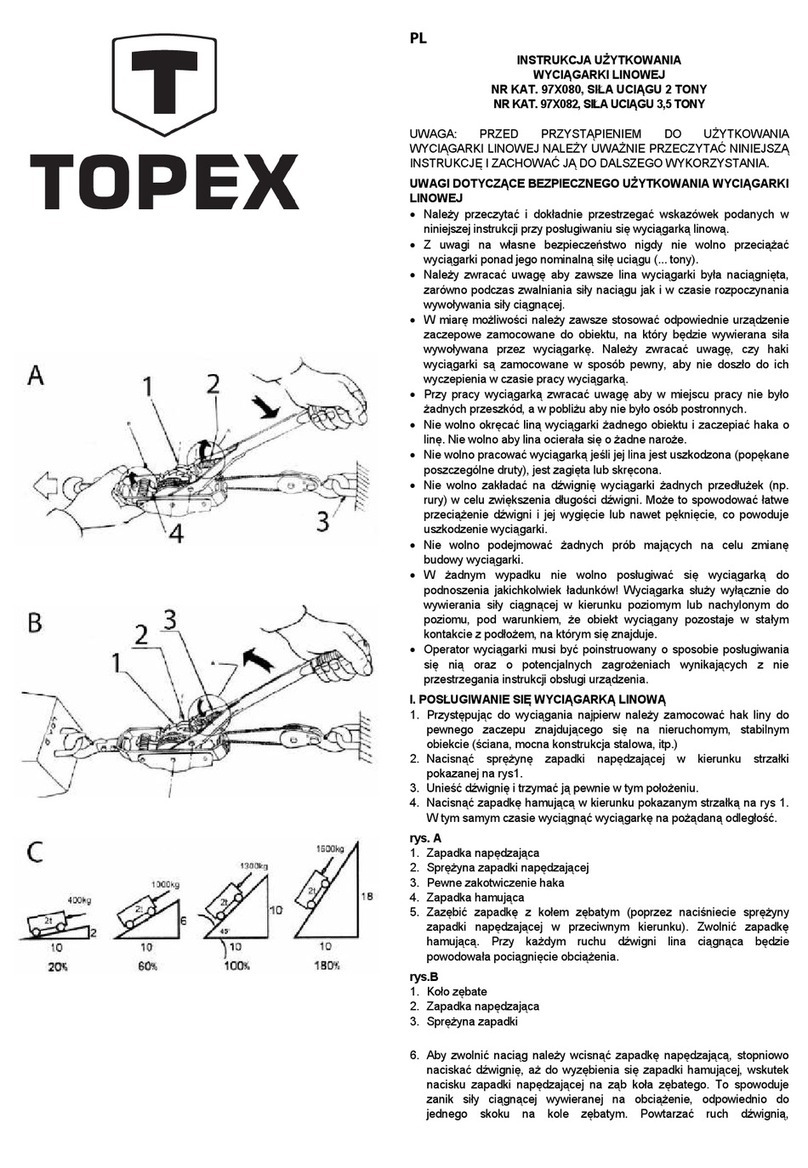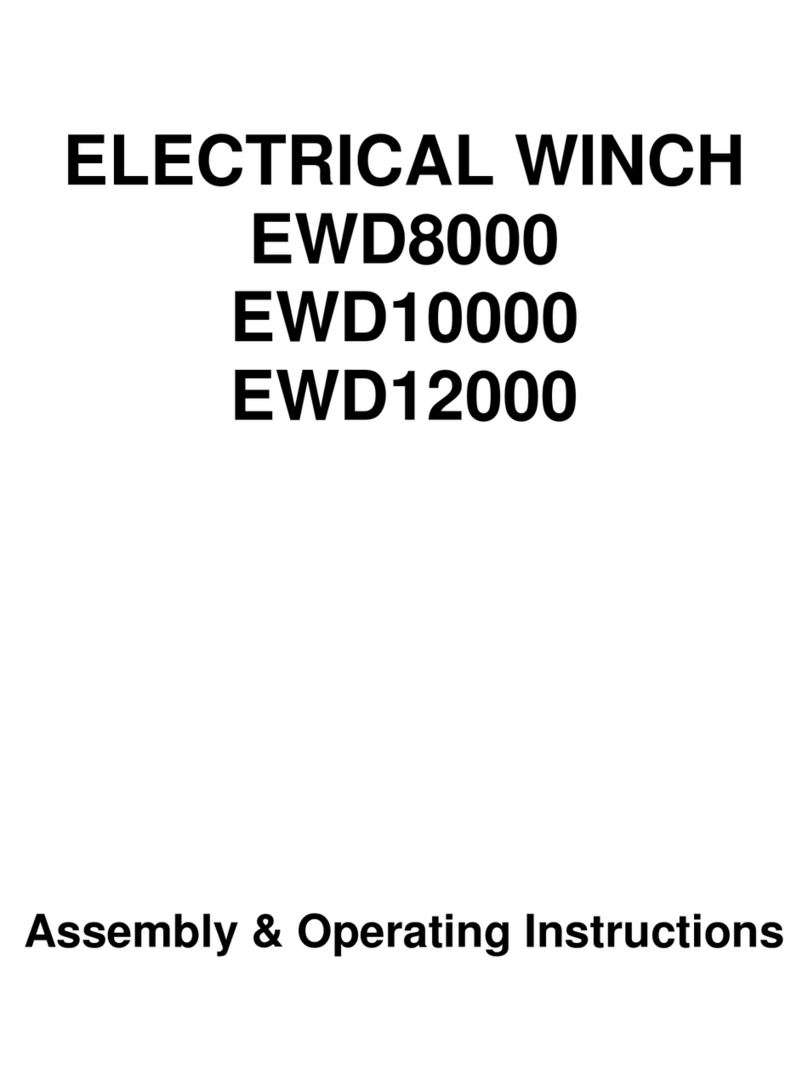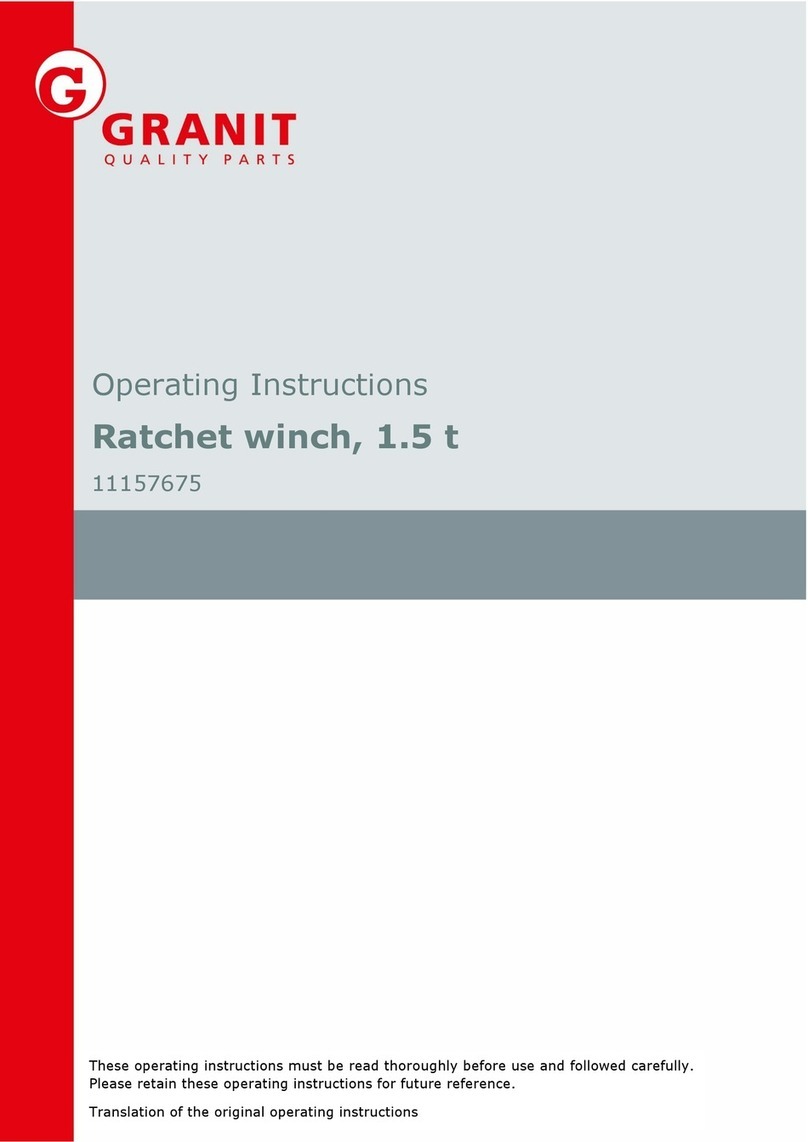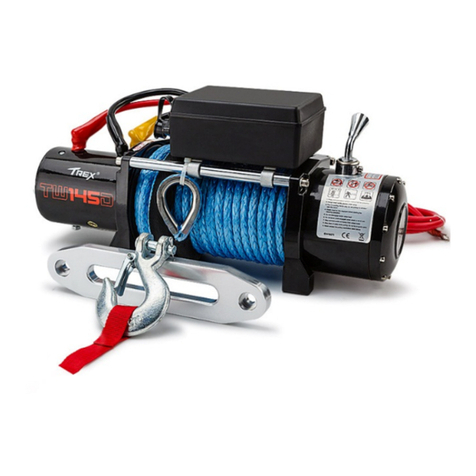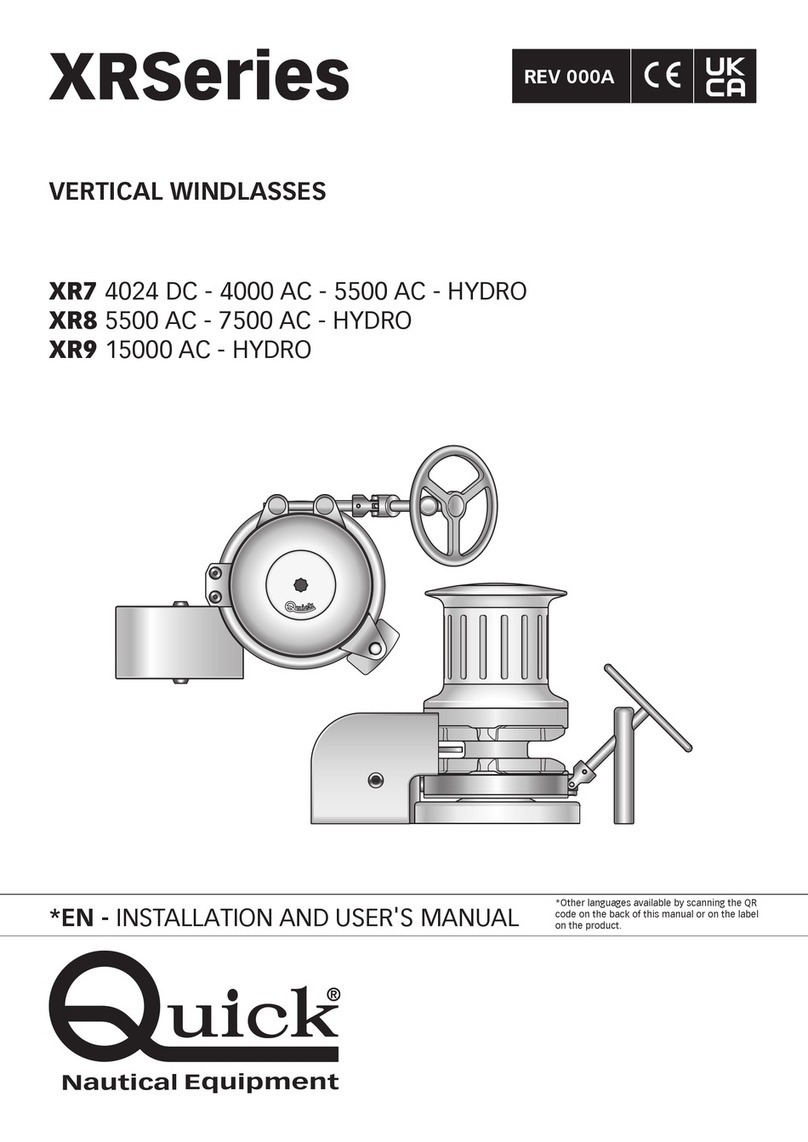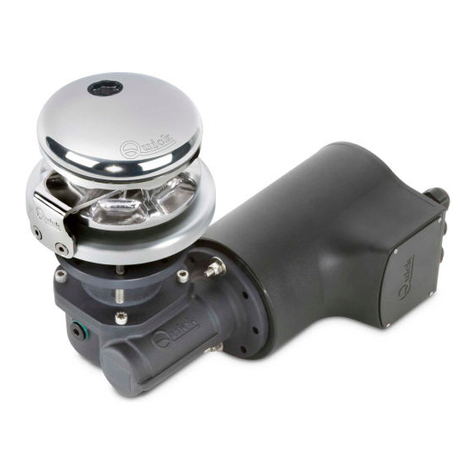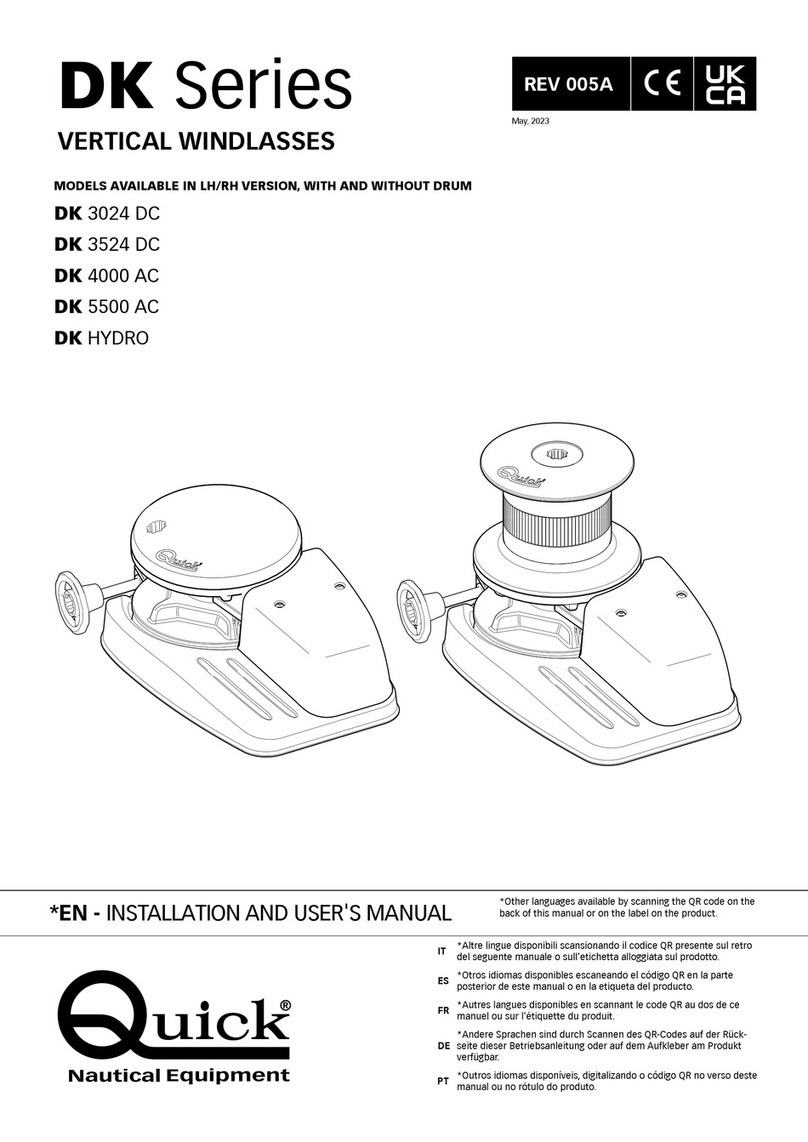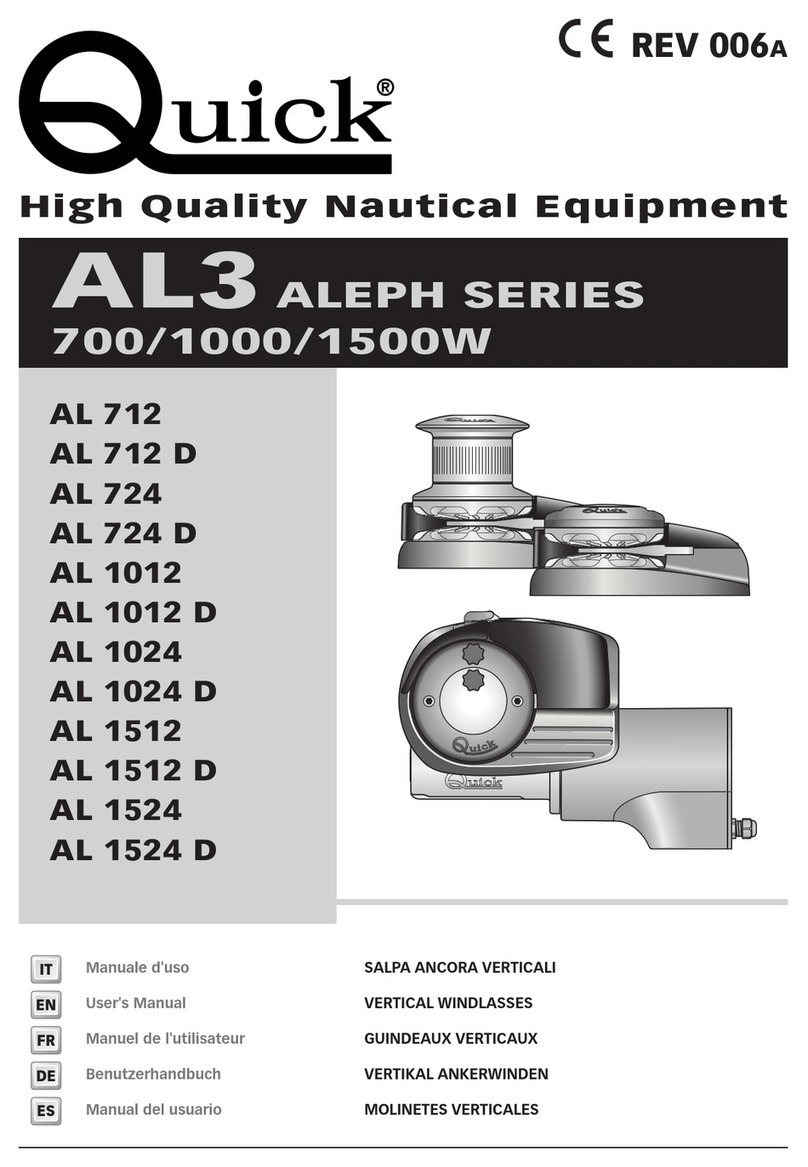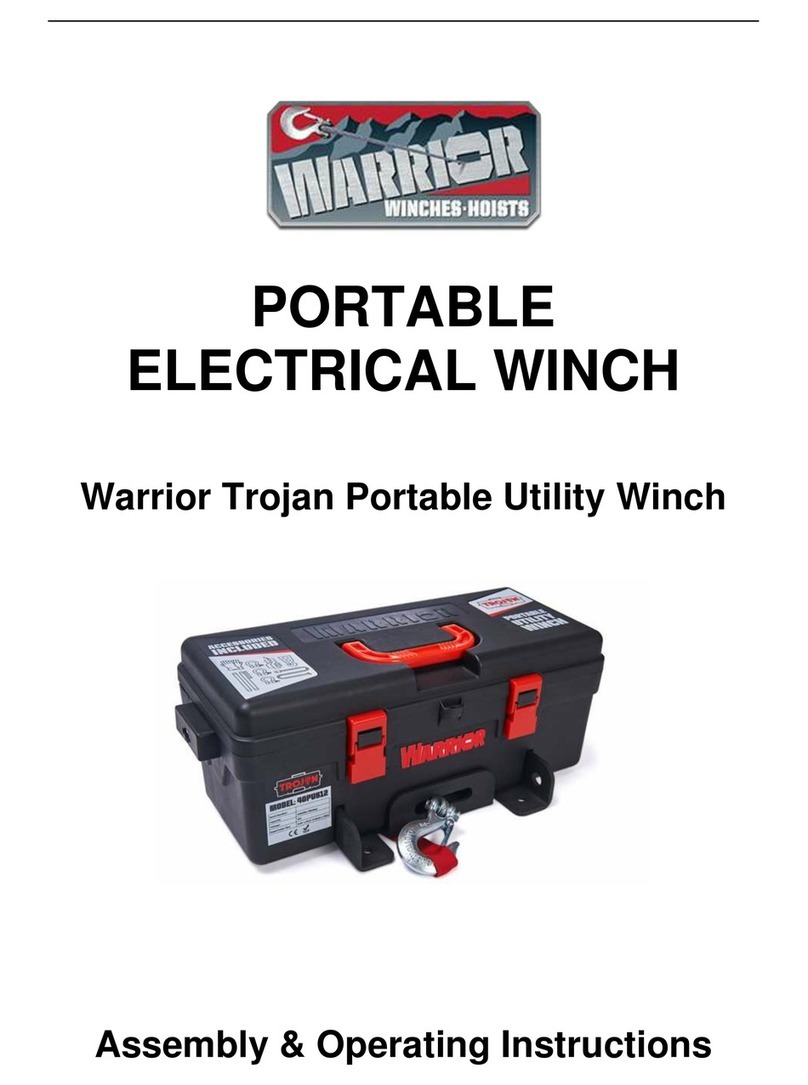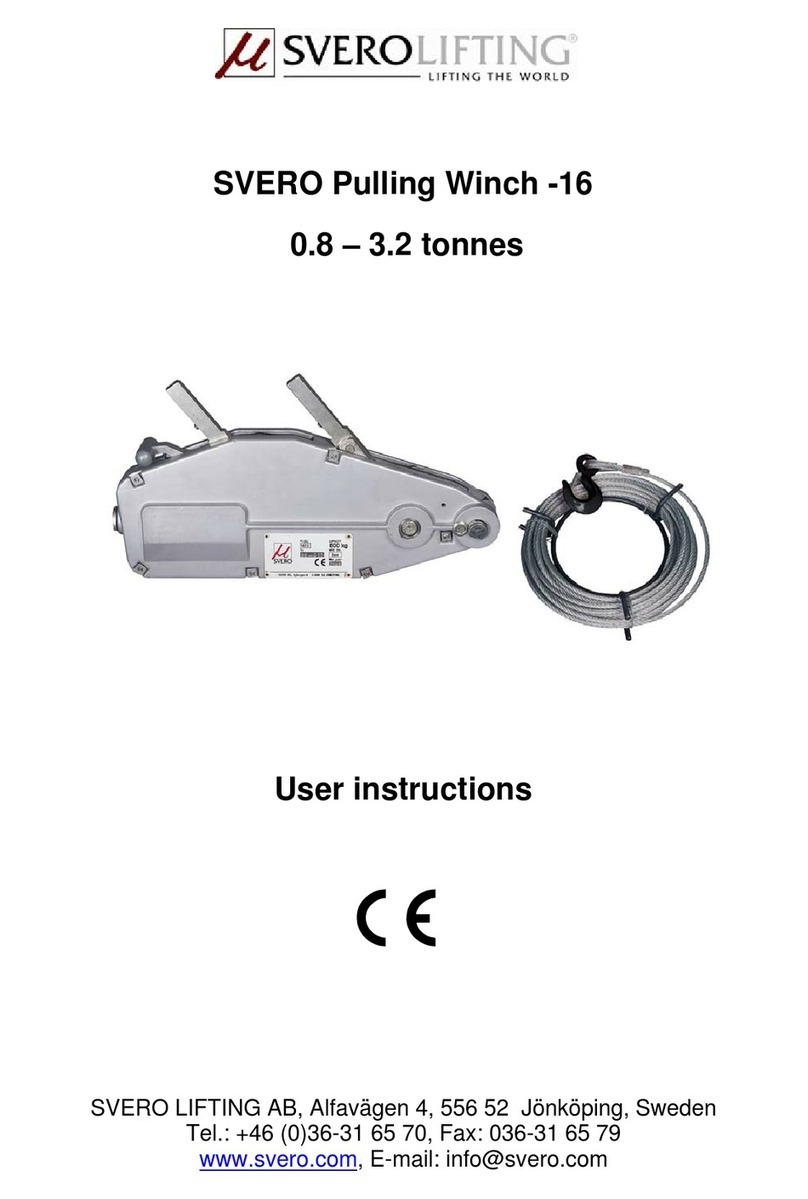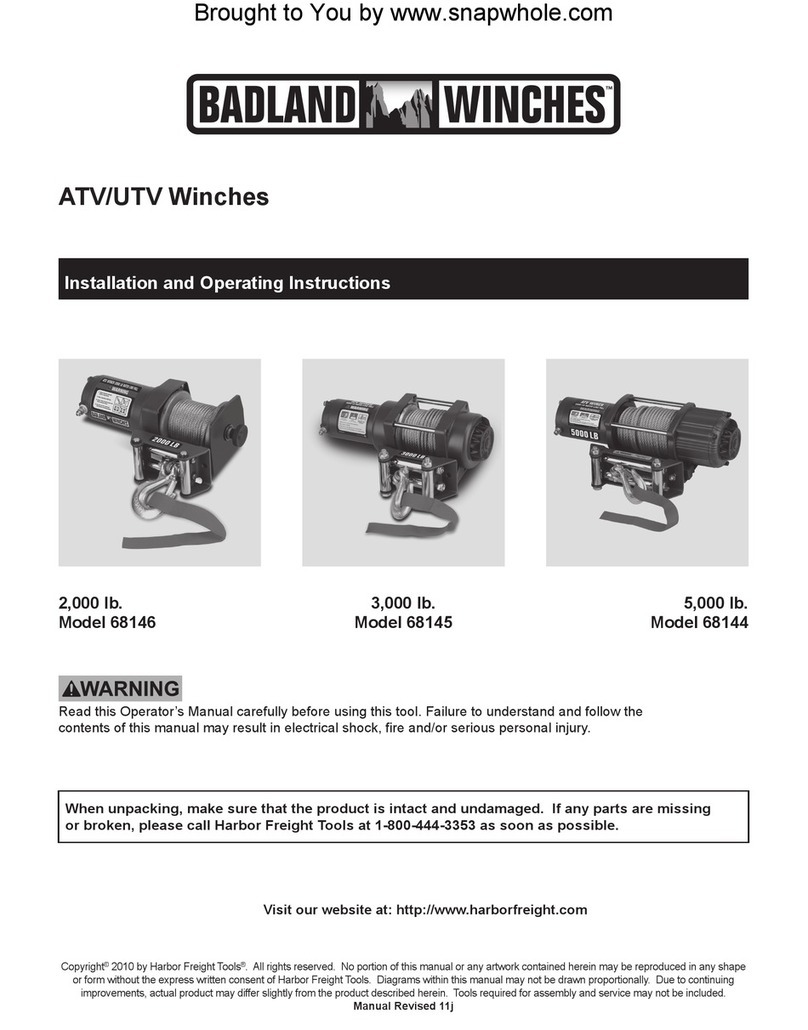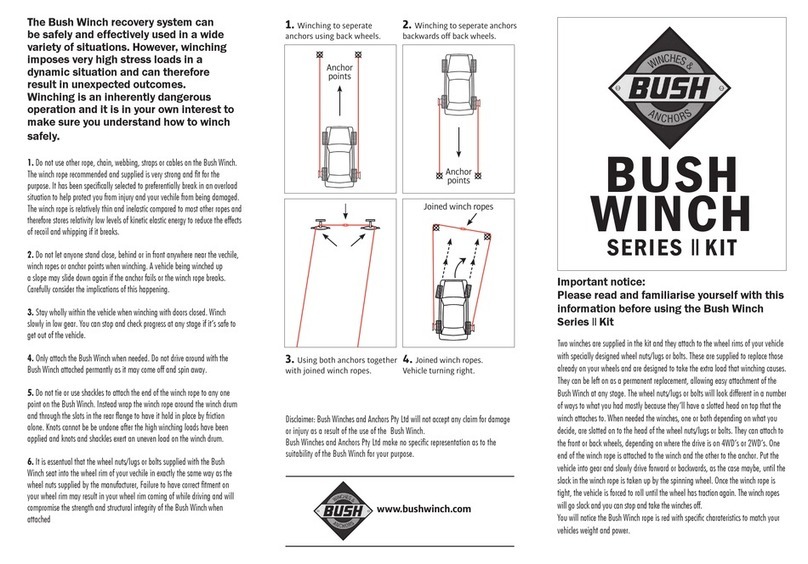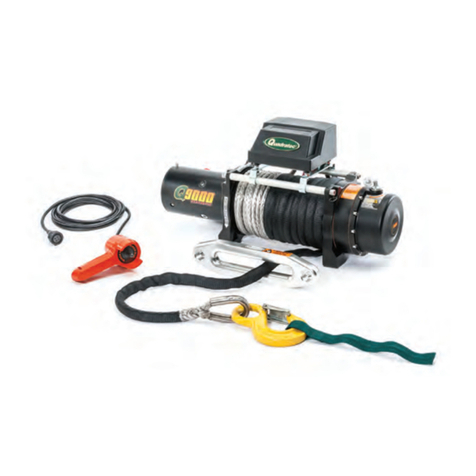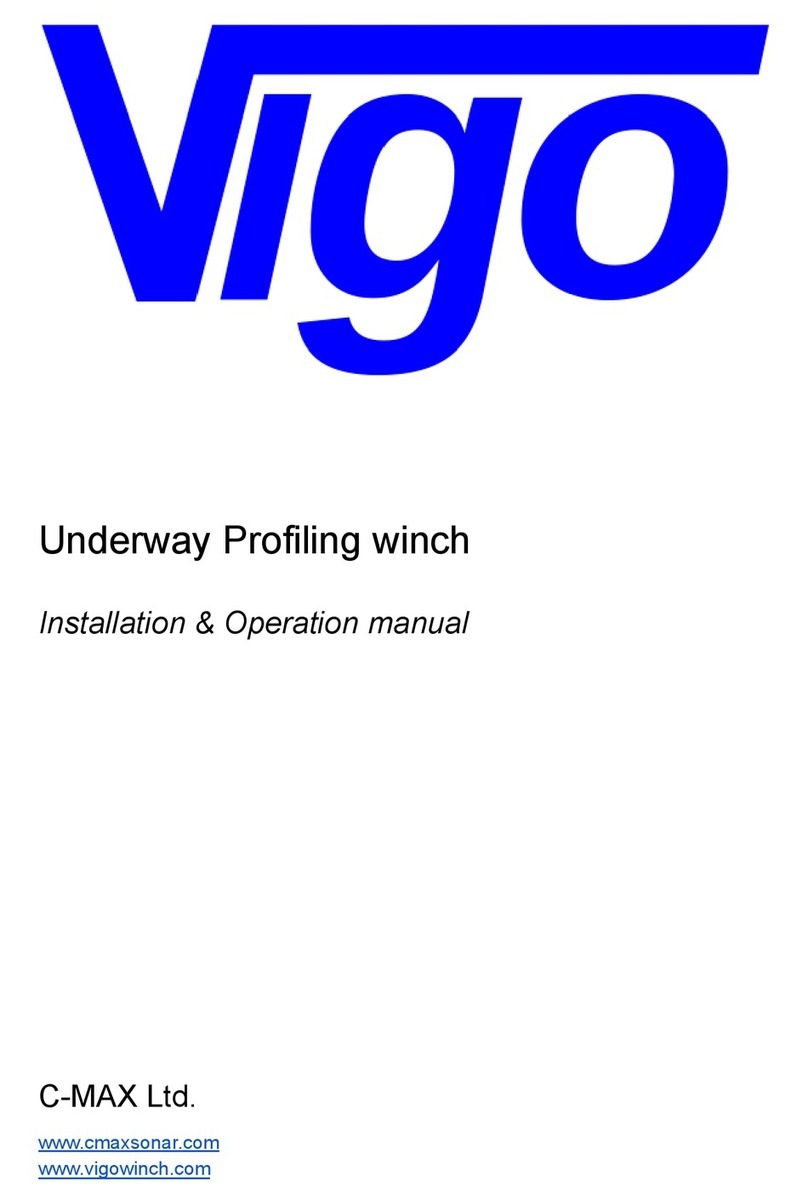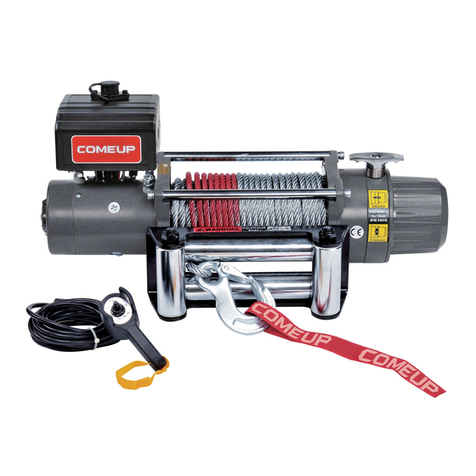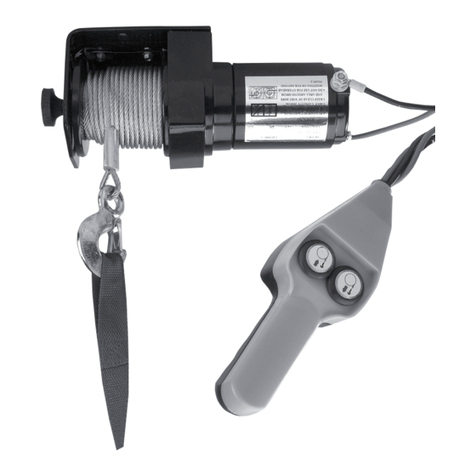
5
INSTALLAZIONE
EAGLE 700/1000/1400W - REV009A
IT
ATTENZIONE:
prima di effettuare il collegamento accertarsi che non sia presente l'alimentazione su cavi.
PRIMA DI UTILIZZARE IL SALPA ANCORA LEGGERE ATTENTAMENTE IL PRESENTE MANUALE D'USO.
IN CASO DI DUBBI CONSULTARE IL RIVENDITORE QUICK®.
ATTENZIONE:
i salpa ancora Quick
®
sono stati progettati e realizzati per salpare l'ancora.
Non utilizzare questi apparecchi per altri tipi di operazioni. Quick
®
non si assume alcuna responsabilità per i danni diretti o
indiretti causati da un uso improprio dell'apparecchio. Il salpa ancora non è progettato per sostenere carichi generati in parti-
colari condizioni atmosferiche (burrasca). Disattivare sempre il salpa ancora quando non è in uso.
Accertarsi che non vi siano bagnanti nelle vicinanze prima di calare l’ancora. Per maggiore sicurezza, nel caso in cui uno si
danneggi suggeriamo di installare almeno due comandi per l’azionamento del salpa ancora. Consigliamo l’uso dell’interruttore
magneto-idraulico Quick
®
come sicurezza per il motore. Bloccare la catena con un fermo prima di partire per la navigazione.
La scatola teleruttori o teleinvertitori deve essere installata in un luogo protetto da possibili entrate d’acqua.
Dopo aver completato l’ancoraggio, fissare la catena o cima a punti fissi quali chian stopper o bitta.
Per prevenire rilasci non voluti l’ancora deve essere fissata, il salpa ancora non deve essere usato come unica presa di forza.
Isolare il salpa ancora dall’impianto elettrico durante la navigazione (disinserire l’interruttore di protezione del motore) e bloc-
care la catena ad un punto fisso dell’imbarcazione.
LA CONFEZIONE CONTIENE:
salpa ancora - cassetta teleruttori - guarnizione della base - dima di foratura - leva - viterie (per
l'assemblaggio) - manuale d’uso - condizioni di garanzia.
ATTREZZI NECESSARI PER L'INSTALLAZIONE:
trapano con punta: Ø 9 mm (23/64"); a tazza Ø 51 mm (2”) e Ø 127 mm (5”); chiave
esagonale: 13 mm.
ACCESSORI QUICK®CONSIGLIATI:
deviatore da pannello (mod. 800) - Pulsantiera stagna (mod. HRC 1002) - Pulsante a piede (mod.
900) - Interruttore magneto-idraulico - Conta catena per l'ancoraggio (mod. CHC 1102M e CHC 1202M) - Sistema di comando via radio
RRC (mod. R02, PO2, H02).
REQUISITI PER L'INSTALLAZIONE:
il salpa ancora va posizionato allineando il barbotin con il puntale di prua. Verificare che le
superfici superiore e inferiore della coperta siano più parallele possibili; se ciò non dovesse accadere compensare opportunamente la
differenza (la mancanza di parallelismo potrebbe causare perdite di potenza del motore). Lo spessore di coperta dovrà essere compreso
fra i valori indicati in tabella. Se si avessero spessori differenti è necessario consultare il rivenditore Quick
®
. Non devono esistere ostacoli
sotto coperta per il passaggio di cavi e catena, la poca profondità del gavone potrebbe provocare inceppamenti.
PROCEDURA DI MONTAGGIO:
stabilita la posizione ideale praticare i fori utilizzando la dima di foratura fornita a corredo.
Rimuovere il materiale in eccesso dal foro di passaggio della catena, rifinirlo e lisciarlo con un prodotto specifico (vernice marittima,
gel o resina epossidica) assicurando il libero passaggio della catena. Posizionare il salpa ancora calandolo da sopra coperta. Avvitare
i pigionieri, utilizzando il lato corto, sulla base. Fissare il salpa ancora avvitando i dadi sui prigionieri di bloccaggio. Collegare i cavi di
alimentazione provenienti dal salpa ancora al teleruttore.
max 5 mm
(3/16”)
40 cm
(16”)
45°
